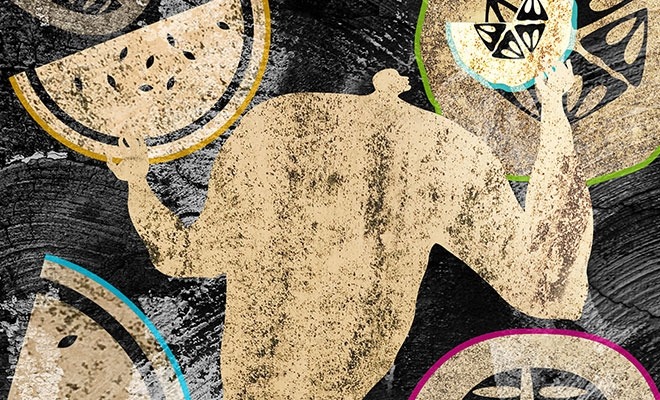At my age, I am quite comfortable with vegetarianism, I certainly understand it and it does not seem strange or difficult. However, veganism to me was pretty darned illusive.
Of course, I had heard of it. However, up until just a few years ago, it had not filtered into the mainstream as much as it is at present. Now, we see an abundance of celebrities and trend-setters following plant-based diets, and thanks to the virality of Facebook and YouTube, becoming informed about it is no longer the challenge is was.
According to The Times of Israel, activists say Israel has the highest per capita vegan population of anywhere in the world. And the trend appears to be accelerating. While the African-Hebrew Israelites have abstained from animal products for decades, activists have cheered the recent growth in vegan awareness. The Israeli subsidiary of pizza chain Domino’s Pizza said the company has sold approximately 300,000 vegan pizzas since launching the range last year.
In came the APPs on my phone, designed to help one “go vegan”, filled with tip-bits for recipes and the like. I read articles online and watched YouTube videos that taught one how to make cheese from tofu and cashew nut icing.
I always thought that going vegetarian in China would be easy, and I still do. What with China’s heavy emphasis on vegetables and fruit, rice, noodles, tea, soy products and rubbish meat options, one could very much be fooled into thinking that strict veganism was attainable. These days, fruit is becoming a major hit as are salads and sushi. Thus my plunge into veganism felt blissfully ignorant.
It all started when I watched a documentary (of course); like others I had watched in the past, this one tried to show me the facts, how animals are treated and the science behind why I do not need to eat certain things. However, it was not until the story began to document the lives of seriously sick people, and how drastically their health improved after living with a vegan diet, did it really convince me that this was something I wanted to try.
Not only is mass production of meat and dairy a scary and devastating thing to watch, the science behind why our bodies do not actually need it and what we consumer as a result, was enough for me to wonder whether such practices are now a common occurence all over the world.
According to American animal rights organisation People for the Ethical Treatment of Animals (PETA), animal food production now surpasses both the transportation industry and electricity generation as the greatest source of greenhouse gasses. And reported by DT Lyons, AE Freeman and AL Kuck in the Journal of Dairy Science in 1991, due to extensive biological manipulation, today’s dairy cows produce up to 12 times more milk than they would naturally produce to feed a calf. The Welfare of Cows in the Dairy Industry by the Humane Society of the United States says, “To keep them lactating at maximum yields, cows are artificially, repeatedly and forcibly impregnated year after year. The constant cycle of pregnancy and birth creates a huge surplus of calves”.
Concerning our bodies, the antiseptics used to disinfect cow teats can provide a source of iodine, but has been found to boost the level of pus in the milk of cows with staph-infected udders. When a cow is infected, greater than 90 percent of the somatic cells in her milk are neutrophils, the inflammatory immune cells that form pus. The average somatic cell count in U.S. milk per spoonful is 1,120,000, according to Michael Greger M.D. FACLM.
Not much perhaps, but it accompanies the antiseptic and hormones that is pumped into cows.
The first 2 weeks was easy; no milk nor yoghurt, no cheese nor meat; easy, until the third week, when beans and rice became a bit old. While my trusty APPs were on hand with wonderful vegan recipes, a lot of them included meat replacement products, which are abundant back home but non-existent here. Furthermore, the recipes simply do not account for a busy person shopping in a Chinese supermarket or wet market, who also only has a very very limited amount of time each week to prepare meals. Eating out was my next challenge. Again I felt it would be easy. “I’ll just order vegetable dishes and soup”, I could be heard saying. Wrong! At a Chinese restaurant almost all vegetable dishes (aside from green options) come with small amounts of meat mixed in, the soups contain egg and all the best dishes are the meat choices. Of course I knew this! Of course, but I forgot… like many things and habits… we forget.
It is even more difficult at Western restaurants in Nanjing, perhaps they over compensate for the lack of quality meat available for foreigners, but the emphasis on meat and cheese is large; Wagas and Element Fresh excluded, but who can afford to eat there everyday?!
I came to a realisation on my China vegan journey and this is it; if my reasons for going vegan while in China are based on strict views over the use of animal products, then it is going to be an uphill struggle and not nearly as easy to do as perhaps anywhere else, but if my reasons are purely for my own body, then moving towards a vegan diet is doable.
If I’m willing to have a pizza every now and then, to pick around the meat hidden in my cabbage dish and remember to ask the vender not to add egg to my fried rice, my life will be easier. So that’s the path I’m on, I cannot afford to eat organic in China, and will not stress myself out about living by the book of orthodox veganism, in a country that eats almost every part of an animal and serves it up looking like toufu.









